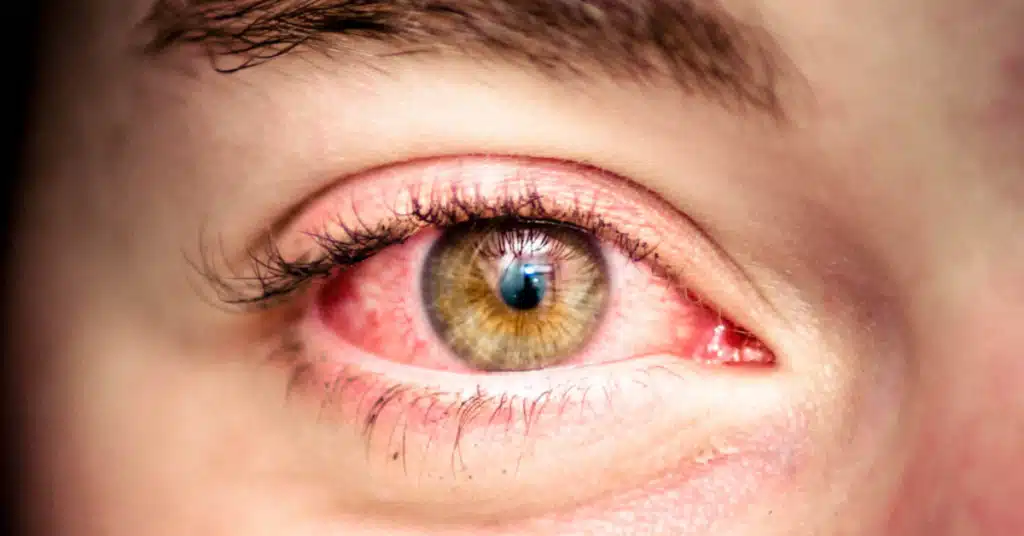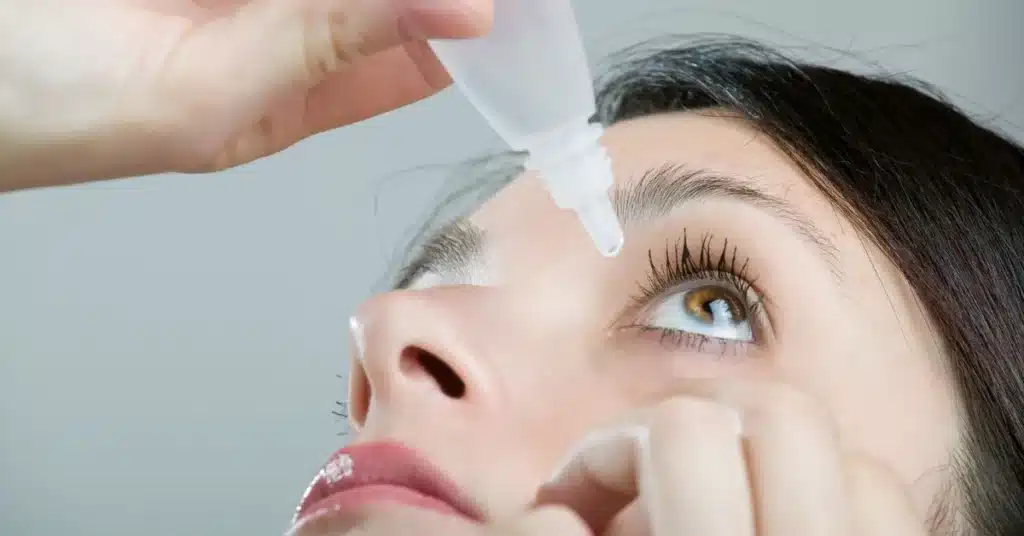Ocular Hypertension vs Glaucoma: Understanding the Key Differences and Similarities
Ocular Hypertension and Glaucoma are two eye conditions that often coexist and share similarities. Still, they have distinct characteristics and implications for eye health.
Both conditions involve elevated Intraocular Pressure (IOP) inside the eye.
Ocular Hypertension can lead to the development of Glaucoma if the high pressure inside the eyes is left untreated.
In Ocular Hypertension, the pressure inside the eye is usually higher than normal. Still, there is no damage to the optic nerve or loss of vision.
Whereas if it develops into Glaucoma, there is damage to the optic nerve.
This article will explore Ocular Hypertension vs Glaucoma, including their causes, risk factors, diagnosis, and treatment options.
Quick Overview
Here is a quick overview to give a clear picture of these eye conditions:
| Aspect | Ocular Hypertension | Glaucoma |
|---|---|---|
| Definition | Elevated Intraocular Pressure (IOP) without optic nerve damage or vision loss | Group of eye diseases with optic nerve damage and progressive vision loss, often associated with elevated IOP |
| Symptoms | Typically asymptomatic | Initially asymptomatic, but can lead to peripheral vision loss; sudden symptoms in Angle-closure glaucoma |
| Optic Nerve Damage | Optic nerve appears normal | Optic nerve damage is a hallmark |
| Risk factors | Family history of Ocular Hypertension or Glaucoma, Diabetes, High blood pressure, Age over 40, Certain ethnic backgrounds, Myopia, and Long-term steroid use, Eye injuries or surgery | Age (over 60 for Hispanic/Latino, over 40 for African Americans), Family history of Glaucoma, Elevated IOP, Diabetes, High blood pressure |
| Diagnosis | Measuring IOP using a tonometer and comprehensive eye exams | Measuring IOP, assessing optic nerve, and confirming with optic nerve damage and visual field tests |
| Treatment | Observation, Eye-drop medications, Laser therapy, Surgery (if necessary) | Prescription eye drops, Laser treatment, Surgery (if necessary) |
| Progression | May or may not progress to Glaucoma | Progressive disease, if untreated, leads to irreversible vision loss and blindness |
Ocular Hypertension
Ocular Hypertension is a condition where the pressure inside the eye (IOP) is higher than normal, but there are no signs of optic nerve damage or vision loss.
It typically does not present any noticeable symptoms.
However, detecting and managing Ocular Hypertension promptly is essential to prevent the progression to Glaucoma.
Glaucoma
Glaucoma is an eye disease characterized by damage of the optic nerve, often caused by elevated IOP.
Unlike Ocular Hypertension, Glaucoma can lead to irreversible vision loss if left untreated.
Treating Glaucoma in its early stages is vital to prevent further optic nerve damage.
Symptoms of Ocular Hypertension vs Glaucoma

In Ocular Hypertension, generally, there are no symptoms.
However, in Glaucoma, the symptoms are not present in the early stages, but gradually, some symptoms start to appear.
In some cases of Ocular Hypertension, eye pain may occur with eye movement or touch, and in
Acute angle-closure Glaucoma, severe eye pain is a common symptom.
Ocular Hypertension is rarely associated with headaches or dizziness.
Still, in Glaucoma, headache and nausea are the main signs of Narrow-angle Glaucoma.
Other symptoms of Glaucoma include:
- Dull or cloudy eyes (infants)
- Increased blinking (infants)
- Tears without crying (infants)
- Blurred vision
- Halos around lights
- Gradual loss of side vision
- Eye redness
Causes of Ocular Hypertension vs Glaucoma
Both Ocular Hypertension and Glaucoma involve elevated Intraocular Pressure.
The primary cause of Ocular Hypertension is an imbalance of the production and drainage of aqueous humor, the clear fluid within the eye.
When the drainage of aqueous humor is compromised, pressure builds up inside the eye, leading to elevated Intraocular Pressure (IOP).
The primary cause of Glaucoma is the development of optic nerve damage, usually related to increased pressure in the eye.
Elevated eye pressure in Glaucoma occurs due to a buildup of fluid (aqueous humor) inside the eye.
In Ocular Hypertension, the exact reason is known.
However, the exact reasons behind the optic nerve damage in Glaucoma are not fully understood.
Risk factors

Common risk factors for Ocular Hypertension and Glaucoma include:
- High internal eye pressure (IOP)
- Corneas that are thin in the center
- Black, Asian, or Hispanic heritage
- Family history of Ocular Hypertension or Glaucoma
- Certain medical conditions like diabetes, high blood pressure
- Extreme Myopic or nearsightedness
- Eye injury or surgery
- Taking long-term corticosteroid medications
Risk factors for only Ocular Hypertension:
- Age over 40
- Those with Pigment Dispersion Syndrome or Pseudoexfoliation Syndrome (PXF) (dandruff-like materials in various parts of the body, including eyes)
Risk factors for only Glaucoma include:
- Age over 55
- Extreme farsightedness
Diagnosis of Ocular Hypertension vs Glaucoma
Both Ocular Hypertension and Glaucoma share several common diagnostic procedures, as they are closely related conditions.
This involves monitoring Intraocular Pressure and assessing the health of the optic nerve.
Here are the key diagnostic tests used for both conditions:
Measuring Intraocular Pressure (Tonometry)
It is used in both the eye conditions:
- Elevated Intraocular Pressure is a characteristic feature of Ocular Hypertension
- High Intraocular Pressure is a risk factor for the development of Glaucoma, and it is an essential parameter to monitor during diagnosis and management
Optic nerve assessment
The optic nerve is checked in both eye conditions:
- Ophthalmologists may assess the optic nerve to identify any signs of damage or abnormalities that could suggest the risk of developing Glaucoma
- Evaluating the optic nerve is a central diagnostic criterion for Glaucoma. Damage to the optic nerve, such as cupping or thinning, is a key indicator of the disease
Visual field test
Visual field testing may be employed to detect any areas of vision loss, aiding in the identification of early signs of visual field abnormalities and progression of Glaucoma.
It monitors Glaucoma, as the condition often leads to the development of blind spots in the peripheral visual field.
Corneal thickness measurement (Pachymetry)
In both Ocular Hypertension and Glaucoma, measuring corneal thickness is important, as it can affect Intraocular Pressure readings and help assess the risk of Glaucoma.
Drainage angle inspection (Gonioscopy)
It is performed to assess the drainage angle of the eye. It is important for evaluating the drainage system’s functionality, which is relevant in both conditions.
This test helps determine if there are any blockages or abnormalities in the drainage angle, contributing to elevated Intraocular Pressure and, in turn, increasing the risk of Glaucoma.
Progression
The progression of both eye conditions is different and leads to the development of different conditions:
- It may or may not progress to Glaucoma. Not everyone with Ocular Hypertension develops Glaucoma
- Glaucoma is a progressive disease that, if left untreated, can cause vision loss
Treatment of Ocular Hypertension vs Glaucoma
Glaucoma and Ocular Hypertension are managed by reducing Intraocular Pressure to prevent vision loss and preserve eye health.
Eyedrops

The treatment options for these conditions are quite similar:
- Prostaglandins: Used to increase fluid outflow from the eye
- Beta-blockers: Reduce fluid production and may be prescribed once or twice daily
- Alpha-adrenergic agonists: Decrease fluid output and are typically used two or three times daily
- Carbonic anhydrase inhibitors: Reduce fluid production and are used two or three times a day
- Rho kinase inhibitor: Lowers fluid production and is administered once a day
- Miotic or cholinergic agents: Increase fluid outflow but are prescribed less frequently due to side effects
You can easily find eye drops at WowRx to reduce eye pressure.
Oral Medications
In Glaucoma, eye drops may not be sufficient to treat the condition.
So, the doctor may prescribe Carbonic anhydrase inhibitors orally as a complement to eyedrop therapy.
Surgery
Some surgeries can be performed to drain the fluid and relieve the eye pressure.
- Laser therapy (Laser Trabeculoplasty): Improves fluid drainage and may be used when eyedrops are ineffective
- Filtering surgery (Trabeculectomy): Creates a drainage opening in the eye to facilitate fluid escape
- Drainage tubes: Involves the insertion of a tube into the eye for improved fluid drainage
- Minimally invasive Glaucoma Surgery (MIGS): A less invasive surgical option often combined with cataract surgery, with various techniques available to lower the eye pressure
Monitoring
Regular checkups are essential to check if the eye pressure is normal and for optic nerve damage.
Monitoring is also essential for both conditions to assess treatment effectiveness and disease progression.
Conclusion
Understanding the key differences between Ocular Hypertension and Glaucoma is crucial for maintaining eye health and preventing vision loss.
Ocular Hypertension serves as a warning sign, indicating an increased risk of developing Glaucoma if it is not treated.
Ocular Hypertension is characterized by elevated Intraocular Pressure without optic nerve damage or vision loss, often lacking noticeable symptoms.
On the other hand, Glaucoma encompasses a group of eye diseases, leading to the development of optic nerve damage and progressive vision loss.
Regular eye exams is vital in early detection and prevention, as both conditions benefit from monitoring Intraocular Pressure and assessing the optic nerve.
Treatment options, including eye drops, oral medications, laser therapy, and surgery, are available to manage Ocular Hypertension and Glaucoma.
Whether you have Ocular Hypertension or Glaucoma, working closely with your eye care professional is key to maintaining optimal eye health and preventing their progression.
Frequently Asked Questions
WowRx uses only high-quality sources while writing our articles. Please read our content information policy to know more about how we keep our content reliable and trustworthy.






